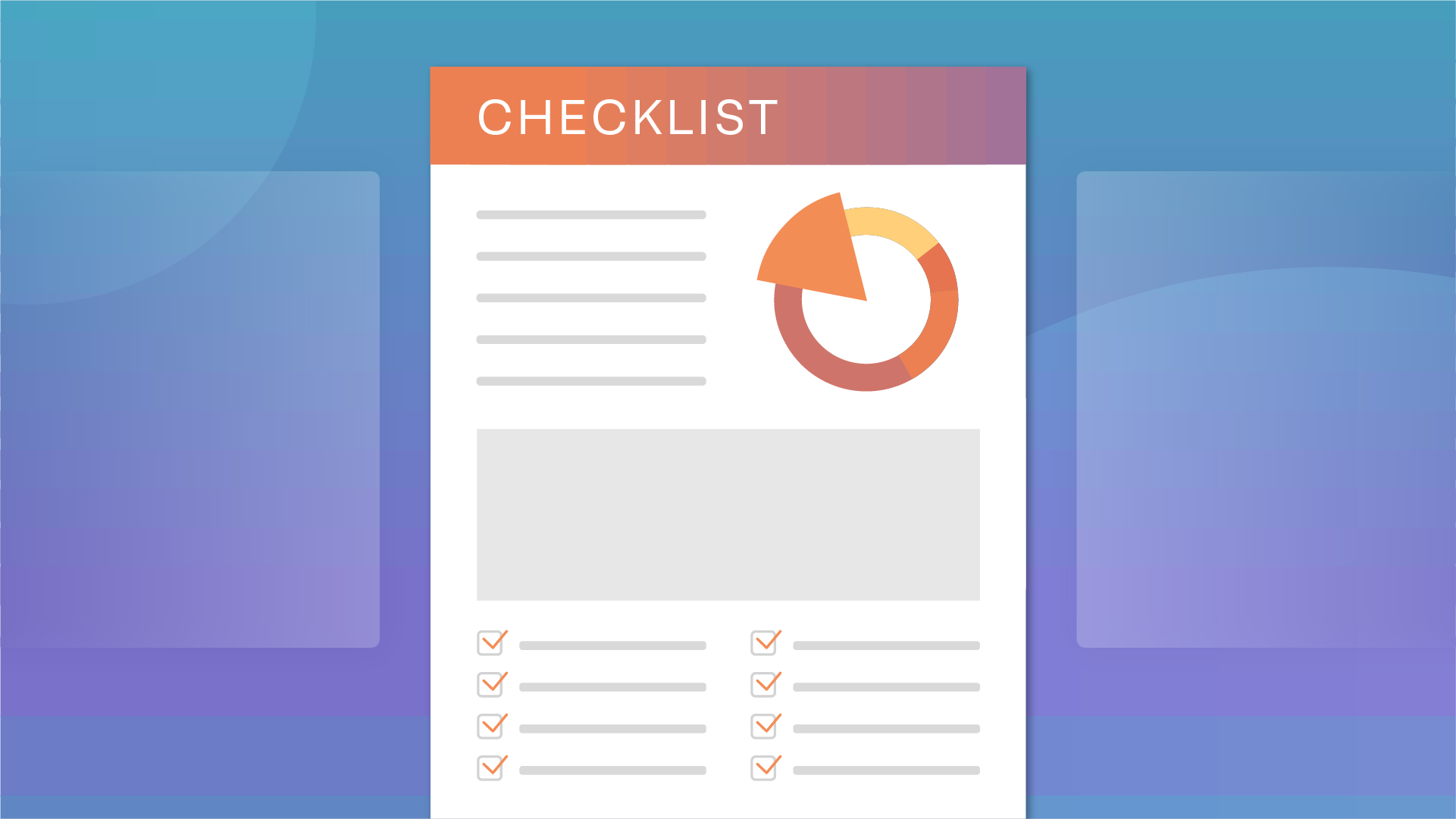Giving a compliance presentation to the board of directors can be a nerve-wracking experience. Whether you look forward to it or you’d like to wrap the experience as quickly as possible, these 10 guidelines will set you up for success.
Showcase your data in a way that does so much more than simply satisfy your board members’ fiduciary responsibility about risk mitigation. Set the stage for powerful storytelling and illustrate how business growth depends on ethics and compliance.
Compliance Best Practices: Presenting to a Board of Directors
You can’t manage what you can’t measure. Determine what key performance Indicators (KPIs) you need to measure so you can report out on your program’s performance and progress over time. Download our Compliance KPIs Worksheet today.
Best practices when giving a compliance presentation to the board of directors
1. DO organize your data and put it in context
The purpose of a board meeting is to impart insight, wisdom, and knowledge, so leadership can make informed decisions. When time and attention are limited, consider using the DIKW pyramid (demonstrating how deep understanding of a subject emerges, passing through four qualitative stages: data, information, knowledge, and wisdom) as a framework for what you communicate and when. During your board of directors presentation, the goal isn’t to present every compliance program performance metric you’ve encountered over the previous quarter; rather, the goal is to tell a compelling story and present strong information, fortified by data, but not wholly reliant on it. Resist the urge to unleash a tidal wave of metrics and instead, pare down your information into concise and clear summaries.
For example, present how many hotline calls you’ve received and how many of them have been resolved. Highlight:
- Trends
- Hot spots
- Areas of significant change
- Relevant context demonstrating the “why” behind the numbers
2. DO have a message
Every board meeting is an opportunity to convey specific and intentional messaging. Before compiling your presentation, you need to consider what your most important information is, focusing on one or two topline messages. Once you identify the most important items, structure the story that will consistently amplify that message throughout the presentation.
The importance of delivering a key set of metrics in every report can’t be understated. But if those metrics aren’t paired with a comprehensive story, then you’ll never be able to properly demonstrate your command of compliance efforts. No matter what metrics you’re presenting, make sure you take the time to find the story living in your data.
If your presentation’s goal is to make the case for more compliance investment, focus on the data that supports your claim and demonstrate exactly how that additional investment would deliver a strong return.
3. DO use clear and simple visuals
Nothing can kill a presentation faster than too many words, charts, tables, and slides. If your goal is to capture the attention of your board of directors, you need to prepare your information in an easy-to-digest manner. No matter how much you love spreadsheets or PowerPoint, your audience’s attention span must remain your top consideration.
Keep your board interested by spending some energy on the style of your presentation. They’ll remain engaged and active if you consider how you’re communicating important information. They say a picture is worth a thousand words and the same is true in a board presentation; spend some time to find impactful imagery that supports the key message for that section of the presentation and doesn’t detract or distract from it. Give your presentation an executive touch by streamlining anything that isn’t necessary for the board to know. Use your notes to unpack what they’re seeing, rather than relying solely on your visuals.
4. DO be brief
Remember that compliance is your area of expertise, and your board of directors may ignore some areas that are important to you, while obsessing over topics you barely even mentioned. Save some time for a Q&A after your core presentation to allow for some deeper dives. You may find that saving a few important details for the Q&A will help you demonstrate your depth of knowledge, when your board is the most engaged. It is not the board’s responsibility to translate your presentation into key learnings and takeaways. You are tasked with clearly and concisely communicating the implications of your core message.
5. DO report the warts
Don’t let your presentation omit or downplay problem areas. In order to be effective, the board needs to understand all significant risks, incidents, and missteps. No matter how effective a company’s compliance efforts are, mistakes will happen — and your board knows that. Avoid suspicion by faithfully reporting a comprehensive picture of your compliance program, warts and all.
After reporting on the problem areas, provide a corrective action plan. You’ll be able to engage your board in a dialogue about their thoughts and further strengthen your compliance culture. Think of this as an opportunity for everyone present to learn from each other and remain receptive to feedback and suggestions. Your board possesses unique and valuable real-world experience, and given the chance, they might surprise you with profound alternative perspectives. After all, some board members sit on multiple boards and may have some applicable real-world insight if they’ve experienced a similar issue elsewhere.
5 don’ts when giving a compliance presentation to the board of directors
1. DON’T live in a vacuum
One of the easiest ways to contextualize your results and demonstrate your subject matter expertise is to use benchmarking data. Provide a frame of reference for the board by including:
- Industry averages
- Current best practices
- Your own organization’s past successes
If you don’t currently have access to benchmarks through your compliance management software, this is a great time to make the case for why you should. Communicate how benchmarking should be a standard practice and will provide clear topics for future discussion on resourcing, progress, and program results. Make the need for benchmarking crystal clear by emphasizing how regulators or enforcement agencies will compare your company to others in your industry if you do come under investigation.
2. DON’T pretend to know it all
Even if every impulse tells you otherwise, you are allowed to say, “I don’t know.”
Even in a moment as important as your quarterly compliance presentation, admitting you’re not sure of an answer to a question is preferable to taking a wild guess or stumbling to find a vague answer. If a board member throws you a curveball and you don’t know the answer to their tricky question, communicate that it is an excellent question, you’ll find a thoughtful answer to it, and you’ll report back later.
There is no way to anticipate every question that will be thrown your way, but by demonstrating your eagerness to find the right answer, you’ll appear more knowledgeable than if you simply rushed to answer. Being prepared for what you don’t know is a crucial part of being well prepared.
3. DON’T wing it
The quality of your rehearsal matters more than quantity of time you spend practicing, so learn the value of deliberate practice, rather than mindless repetition. Intentionally and deliberately rehearsing your presentation will help avoid disaster.
Plan your presentation and then refine your delivery by giving your presentation to your empty office, your spouse, or even your dog. If a living audience isn’t available, try recording your presentation and listen back. This simple act can help you polish your performance and identify any troublesome spots. Active rehearsal will also help you shake off the nerves that accompany public speaking; you’ll know where your tricky transitions, difficult statistics, or unfamiliar names are before you stumble in front of the board.
4. DON’T confuse professional with boring
Even though a compliance presentation is a professional endeavor, it need not be boring. You’ll start with appropriate dress, careful language, and all other tenants of professional demeanor, but then you can invite a little humor or personal flair to your presentation. You can be conversational, friendly, and accessible, while remaining professional and polished.
Remember that you’re presenting to colleagues, rather than a judge and jury. Your presentation will be much more memorable and impactful if you find that sweet spot between professional and personable. Need more science to justify making your presentation more engaging? Narrative psychology supports the human need for connection via storytelling and personalization, “Transformation IS storytelling. While data and business cases are important for getting board approval, the story behind that data and what it can unlock in the future is what makes the case compelling. Behavioral science suggests that both data AND emotion are necessary to make change stick and that a personalized approach can make the listener feel both heard and seen.”
Source: The key to successful transformation? Share the true story behind it
5. DON’T cut time from Q&A
Your board will have questions for you, so make sure you leave time for Q&A. Don’t rush this opportunity to demonstrate your effectiveness and compliance acumen; bake in some additional time for an interactive forum. Stage a mock Q&A by anticipating what questions you might be asked and prepare your responses. This exercise will help you drill down into any irregularities, trends, or key information to communicate.
Want some extra credit here? Stay up to speed on current events and any related headlines that might impact your company. If you know a board member never misses an issue of a particular business publication, make sure you don’t miss it either. Up to the day of your presentation, continue to check in with the news.
It never hurts to know more about your board, as both business leaders and individuals. Research the other boards they sit on, their unique career path, and any important milestones from their tenure. Human nature fixates on recent pain and problems, so if you know their scars then you can better prepare for their hot button issues and related lines of questioning.
Don’t know where to start, but you want to understand the cultural health of your organization? Are you looking to refine the KPI’s you already track like into resolution times, substantiation rates, or employee ethics investment? Download this interactive Compliance KPIs Worksheet to determine which metrics to measure and track over time.











